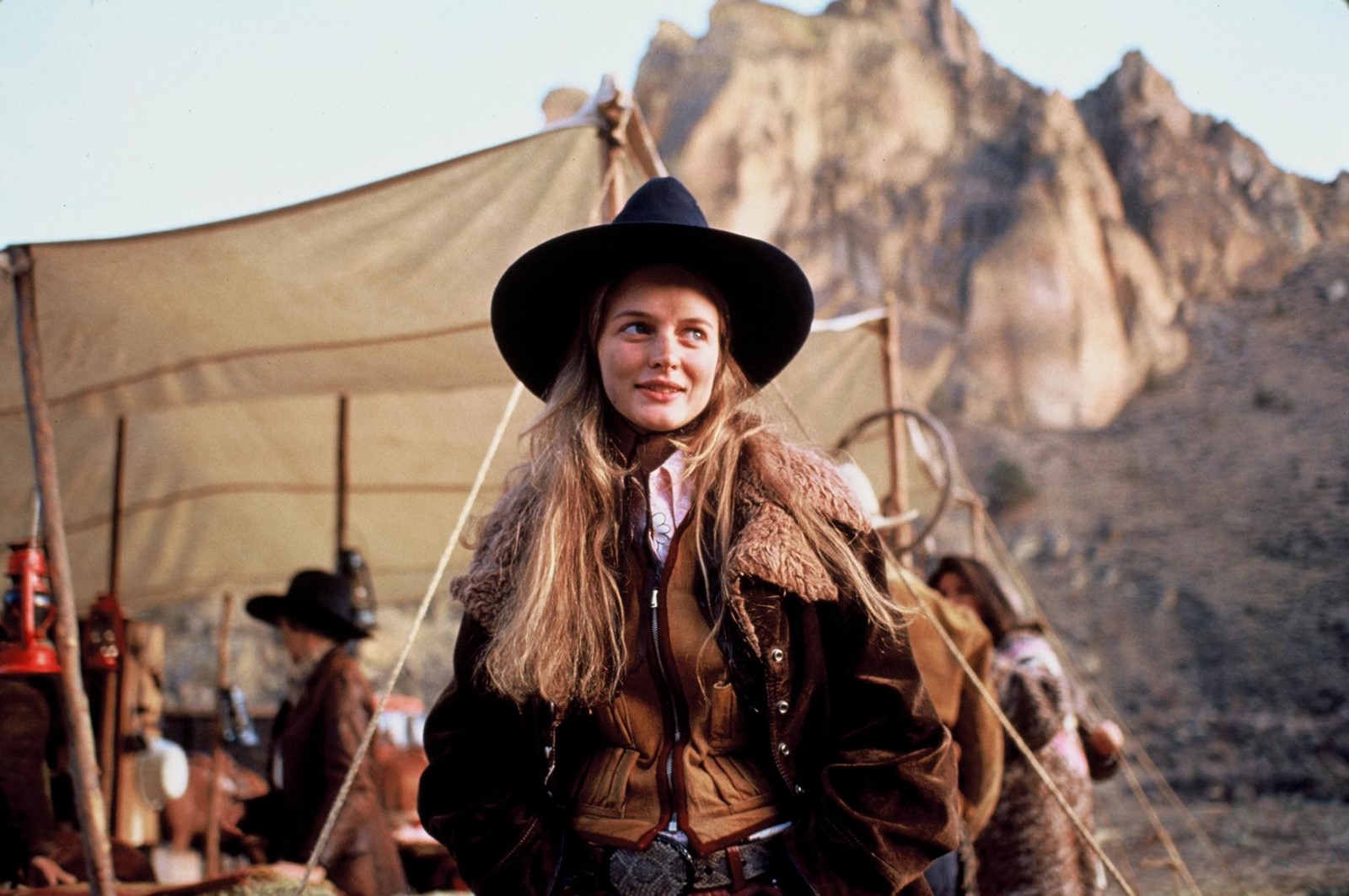If the wild west has occupied a particular – and glorious – place in the United States’ collective imagination for centuries, then it is surely down to that most archetypal of all-American heroes, the cowboy. Are there many symbols that encapsulate the American spirit quite like the cigarette-puffing Malboro cowboy, riding off into the sunset?
That image – replicated too in the advertisements of tobacco competitor Camel – is not, of course, without its irony. Cigarettes kill after all, and the cowboy seemed well-versed in that activity too – it is no secret that the conquering of the frontier came with death and destruction all of its own. If cowboys and Indians was once an innocuous playground game, it is surely now an exercise in replaying America-grade colonialism.
And yet, the cowboy, and his female counterpart, the cowgirl, continue to fascinate. They may have evolved – in some cases, literally, as per the artificially intelligent pioneer-bots in HBO series Westworld – but even a troubling backstory has not tamed the propensity they offer for escape, and the whiff of freedom they exude. One imagines that for many, particularly in Trump-era America, there is new appeal to striking out into the ungoverned yonder.
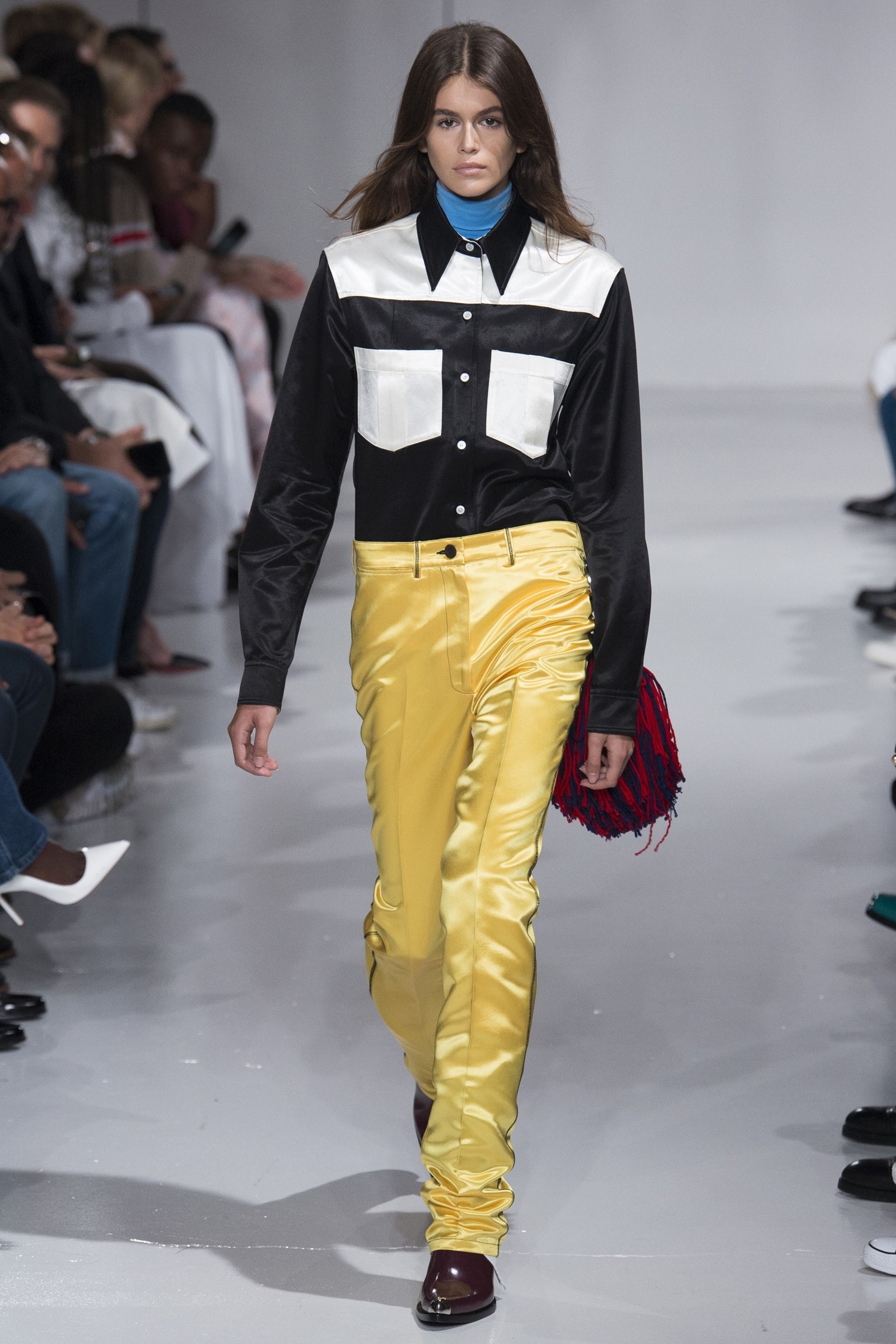
It is likely that this spirit of freedom in part influenced Raf Simons’ decision to revive the cowboy – at least, the cowboy’s Western dress – in the Belgian designer’s first collection for that most American of American brands, Calvin Klein, last year. There, he placed the tropes of the Western uniform – namely, the stylised yoke of the shirt, and the stub-toed cowboy boot – front and centre of his take on the fashion behemoth. The S/S18 collection, in its roll call of American archetypes, was a musing on his newly adopted home’s well-known propensity for dreaming of being bigger, better and more successful. Yet, as John Barry’s theme from Midnight Cowboy soundtracked – the movie that troubled the Western narrative with queerness – Simons’ appetite for subversion bubbled beneath.
Because, if his evocation of the cowboy spoke of an appealing narrative of American essentialism, Simons too seemed to chew over the discombobulating narratives that make up this myth. Such was made clearer in his subsequent two collections – he called them his American trilogy – which increasingly mined the lurking underside of the United States. First, for S/S18, he turned to the Hollywood slasher with theatrical PVC outerwear that appeared splashed with blood, and Andy Warhol’s Disaster series was used as a violent graphic motif; for A/W18 the popcorn-strewn floor, burnt-out barn and hazmat-suited men and women spoke of impending American doom. (References to Western wear remained through all three seasons.)
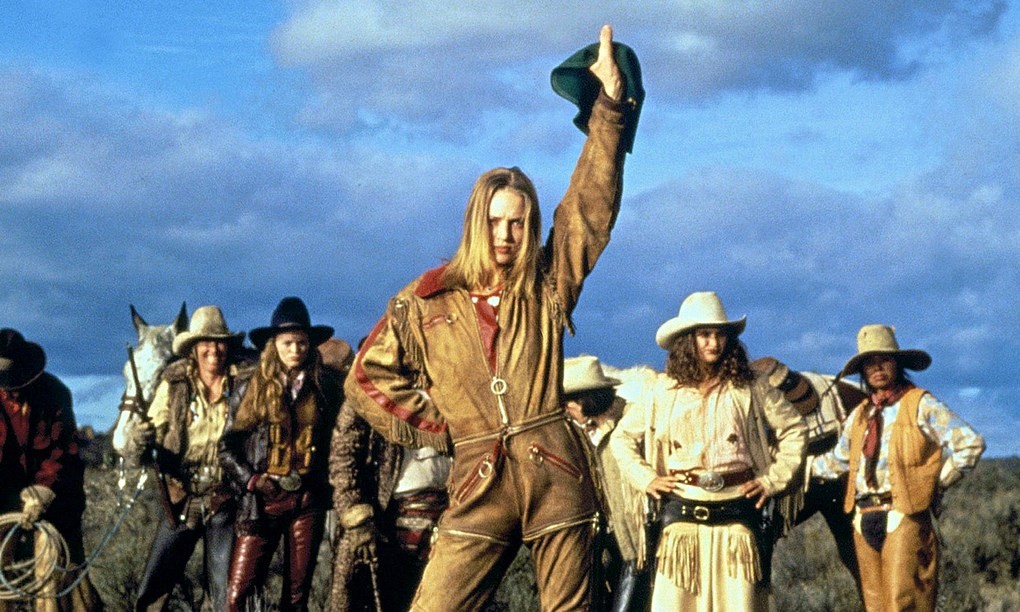
As is often the case, other designers – as if informed by osmosis – channelled these tropes too, and Western clothing became ubiquitous for the season, from Céline to Chloé, Marques’Almeida to Coach 1941. A year of iterations on the theme followed – most recently, Nicolas Ghesquière placed a cowboy hat among his thrilling imagining of an eccentric woman’s wardrobe for Louis Vuitton Resort 2019 at France’s Fondation Maeght; at Dior’s cruise collection, Maria Grazia Chiuri was inspired by Mexico’s rodeo women, the Escaramuz. (#DiorRodeo was the official hashtag of the evening.) The cowgirl had become fashion’s ebullient muse.
But if the cowboy has a troubled past, the cowgirl is just as an ambiguous of archetypes. At her best, she is a symbol of gender confront – the gun-wielding Annie Oakley, for example, a woman far and away from her Victorian-era transatlantic female counterparts. “I ain’t afraid to love a man. I ain’t afraid to shoot him either,” she once said. So too Martha Jane Canary, better known by her her nickname Calamity Jane, whose daredevil spirit would inspire the 1953 film of the same name, and make Doris Day a star.
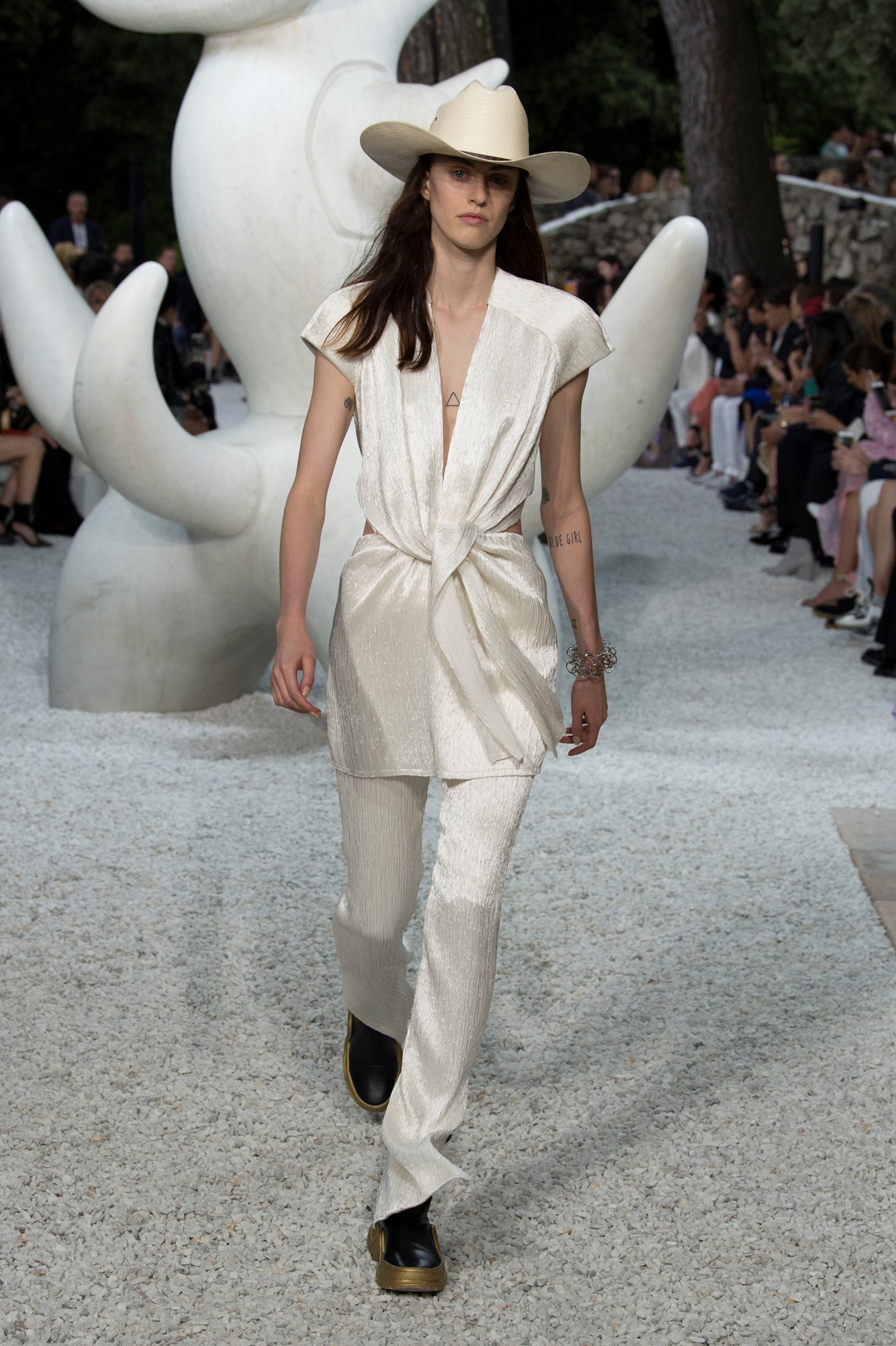
At her worst, though, the cowgirl has been coopted into something else entirely, and a quick Google Image search proves as much – the modern cowgirl is made for titillation and little else, invariably scantily clad and white. Far from the frontierswoman of yore, she does not serve to challenge masculinity, nor take its place – rather, this cowgirl asserts a man’s power over her image. Even horseriding rodeo girls are taught the importance of becoming a queen in a sparkling crown, rather than their rugged counterpart, and his beaten-down cowboy hat.
There have, though, been less troublesome imaginings of the cowgirl in recent years. In the cult Gus Van Sant movie Even Cowgirls Get the Blues – soundtracked by k.d. lang – Uma Thurman plays an abnormally large-thumbed Sissy Hankshaw, who, after a series of travails, becomes the head of a ranch run by lesbians and takes on government agents in bloody battle. Think too of Anne Hathaway’s icy Midwestern belle in Brokeback Mountain, who transforms herself from sparkling rodeo queen to hardnosed businesswoman. In Westworld, Thandie Newton’s brothel-owning character may not be a cowgirl per se – but the bawdy frontierswoman is the nexus of power in the series, of whom the other characters circulate.
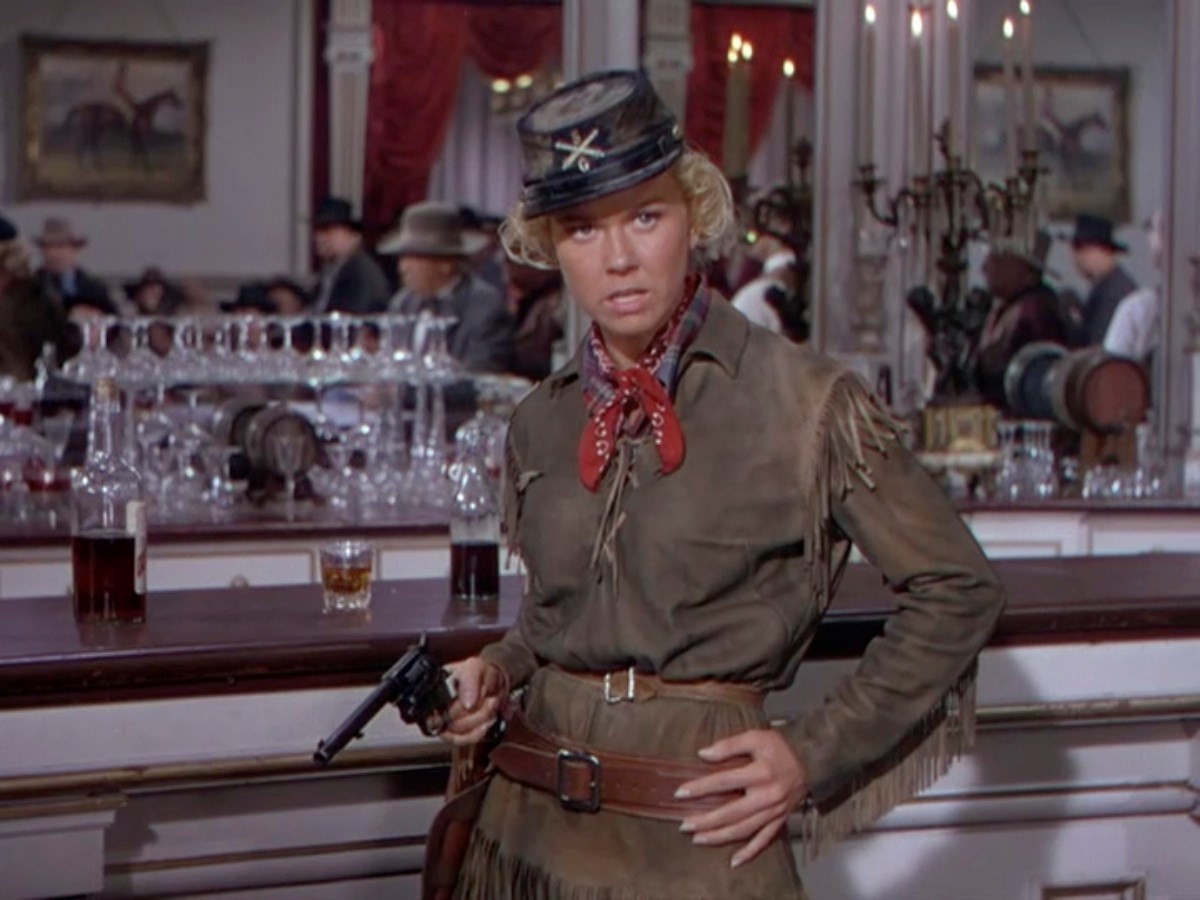
It is in this subversive spirit that designers called on the American West in the previous year’s collections. At Versace, she may have found her sexiest iteration – cinched in leather and gold, with a cowboy hat to match – yet, in that way that Donatella has proved so adept (as her brother was before), she retained a stratospheric sense of power. Sexy, yes, object, no – the Versace cowgirl dares you to try her.
On a wholly different note is New York collective Vaquera – whose name, in itself, translates to cowgirl in Spanish – who present their namesake with a heavy dose of irony. No danger of her being sexualised here – massively proportioned cowboy hats, cut-up denim and the American flag reformed into the blousy ruffles of a gown are typically surreal. (Off the catwalk and on Instagram, Patric DiCaprio, one of the collective’s designers, would descibe himself as an “emo cowboy forever”.)
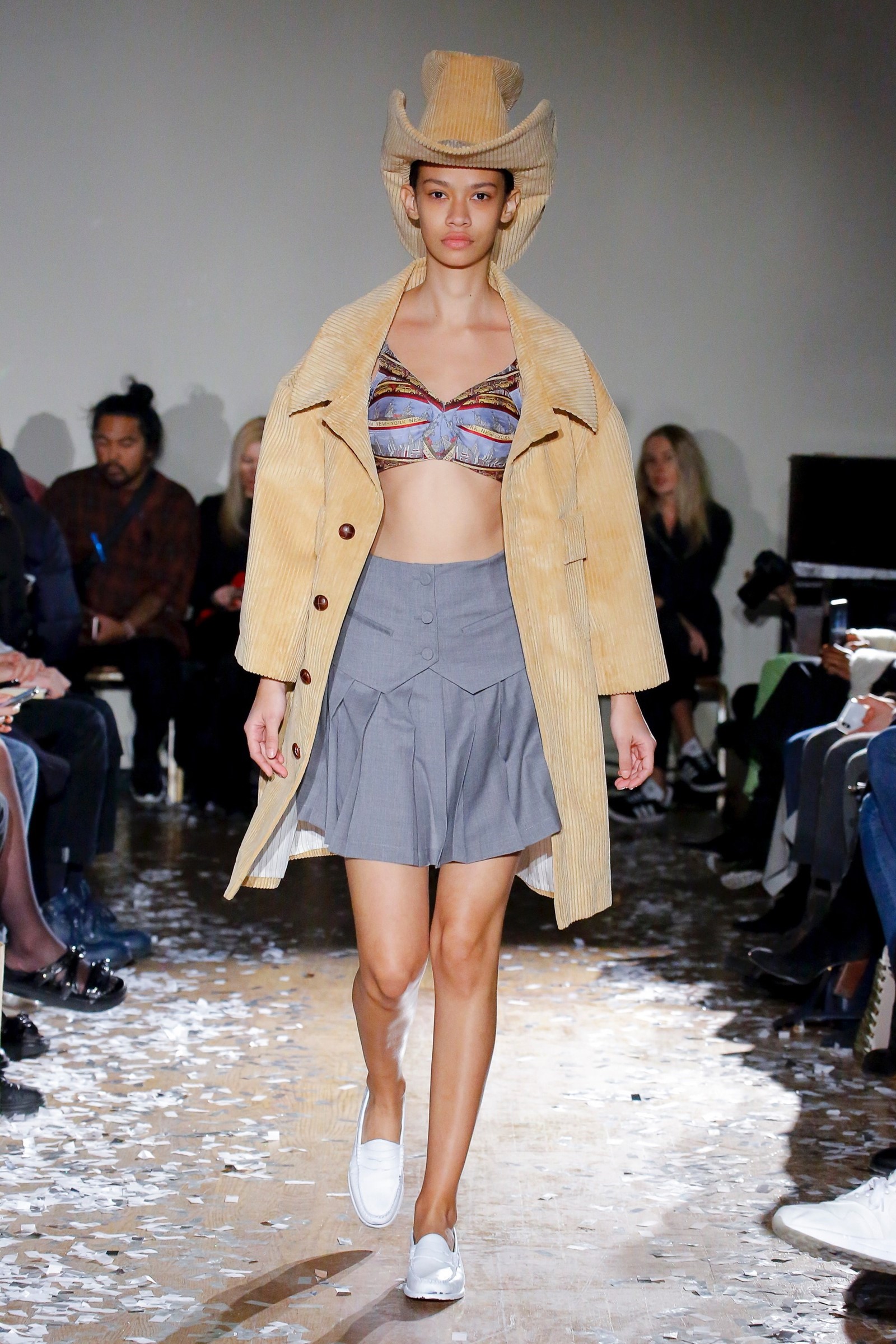
Perhaps the many iterations of the cowgirl speak of the very contradictions that define her. Can she be two things at once? Or three – powerful, sexy, but practical too. Few people would not attest the comfort of a cowboy boot, and its resurgence will likely please many women in the market for hardy footwear. Forever a classic of Phoebe Philo’s tenure at Céline will be her snip-toed take for A/W17 – or, just as classic, the studded rodeo boots she presented for A/W15. The cowgirl’s appeal, in a sartorial sense at least, is that she wears clothes to live in – clothes that have purpose, and work for her. Clothes that make her free.
